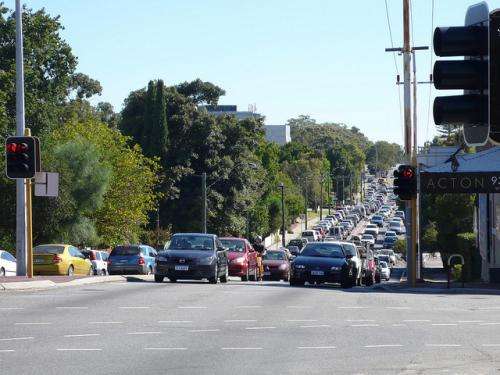Global decline in car dependency investigated

To reduce its car dependency, Perth should improve public rail transport and increase urban density around rail stations, according to data from 26 cities gathered over 40 years.
Curtin University Sustainability Policy Institute researcher James McIntosh investigated the global decline in car dependency in developed cities, and says his study shows increasing urban density, improving public transport, and reducing road length per capita are behind the trend.
"[This result] gives Perth an opportunity to look forward and say 'do we want this sprawling, highly car-dependent increase in our suburbs, or do we want to develop around our rail infrastructure, and develop around our inner areas,'" Dr McIntosh says.
The study applied statistical modelling to data from 26 cities across the US, Europe, Canada and Australia, for the years 1960, 1970, 1980, 1990 and 2000, assessing the influence of a city's culture, economics, climate, transport infrastructure and urban form on its car dependency.
"We used about 40 different variables and the only ones that continually responded appropriately and didn't drop out of the model were urban density, public transit service kilometres per capita, public transit passenger kilometres per capita and road length per capita."
Dr McIntosh's study shows increasing road length per capita by one per cent increases vehicle kilometres travelled (VKT) by 0.02 per cent.
Rail-based transit services were the most strongly linked to reducing VKT per capita, Dr McIntosh says.
"As cities are investing more and more in public transport provision, and increasing the densities in the centres, you're seeing a drop off in the provision of road space per capita as well."
"These are the key metrics that can help reduce car use per capita in our cities, and all the negative things that come with large-scale car use, which are all your urban form being covered in freeways, congestion in the cities and car emissions."
Perth's 'Weak Centre Strategy'
Based on criteria about provision of public transport, density of city centres and urban form, each city was categorised as having either a Traffic Limiting Strategy, Low Cost Strategy, Strong Centre Strategy, Weak Centre Strategy, or Full Motorisation.
Perth was categorised as having a Weak Centre Strategy: a city centre with less than 250,000 jobs, significant peripheral and suburban employment served by car, where travel to centres by car is marginally cheaper than by public transport.
Provided by Science Network WA


















